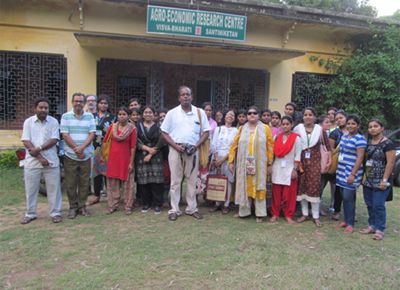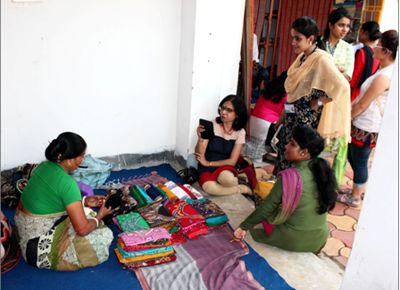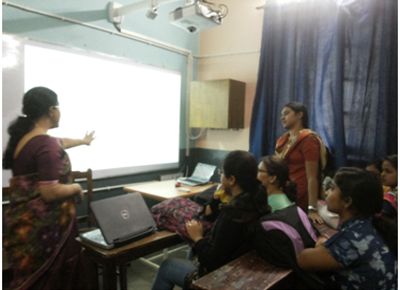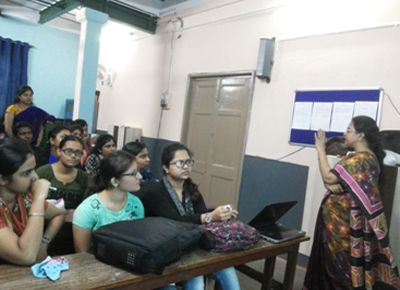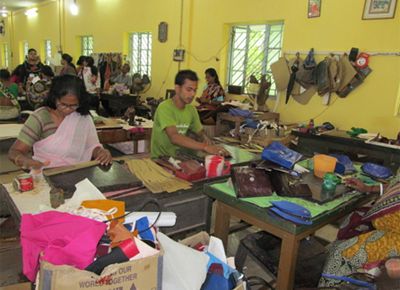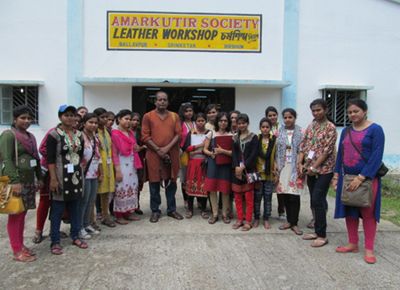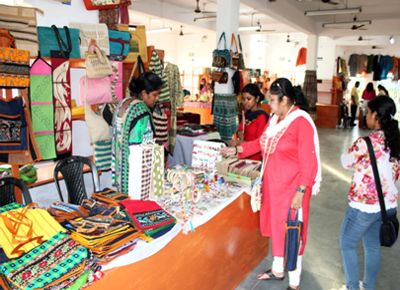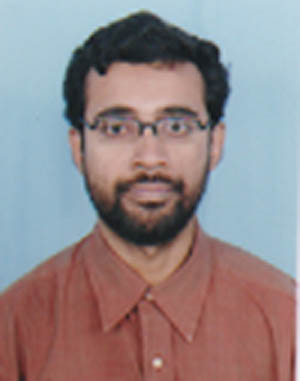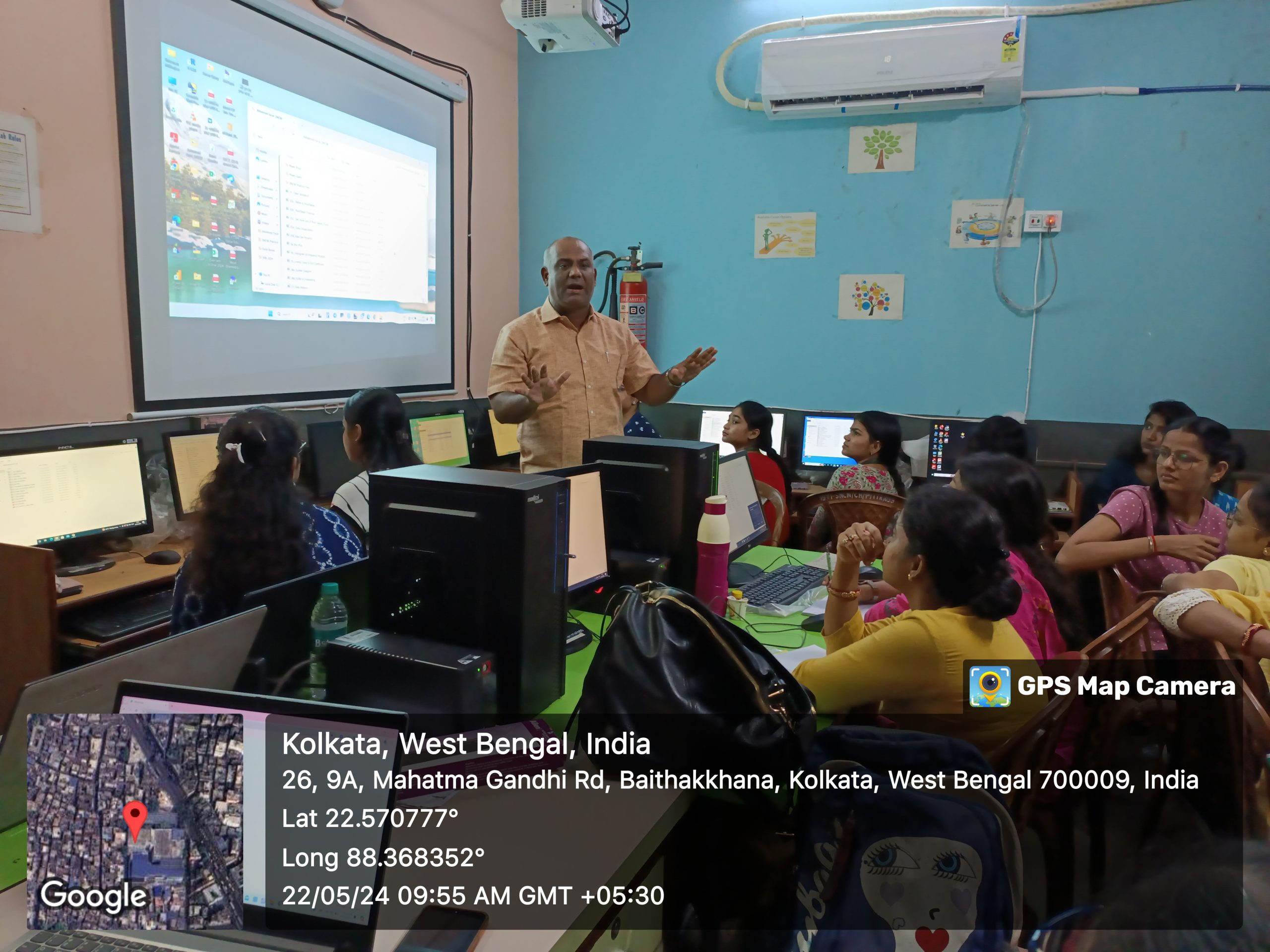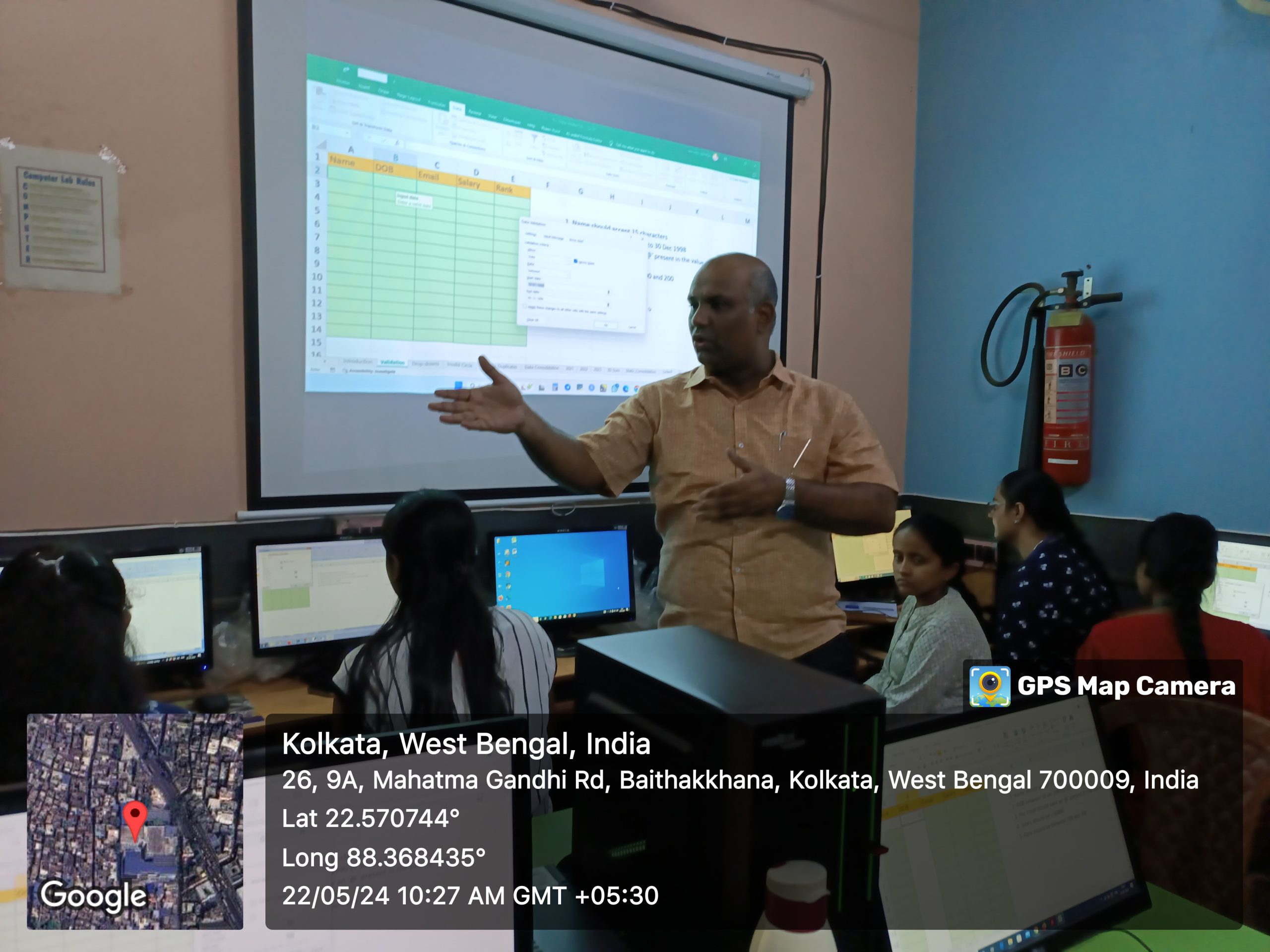Economics
History of the Department
The Department of Economics came into existence with the inception of the college in 1948. During that period, the course levels included undergraduate economics at both pass and honours level, and Higher Secondary Economics. Economics at Higher Secondary level was subsequently withdrawn following the decision of the college
| Former Faculty Members | |
| Full timers | Part timers |
| Prof. Sunil Mukherjee | Tapan Chatterjee |
| Prof. Ruby Dasgupta | Balaka Chakraborty |
| Prof. Himangshu Chakraborty | Paramita Ghosh |
| Susmita De Mukherjee | |
| Subhas Chandra Dey | |
| Somasree Tewari | |
| Present Faculty Members of the Department |
| Dr. Suparna Gangopadhyay –Associate Professor, Head of the Department |
| Smita Majumdar – Associate Professor |
| Budhaditya Banerjee -PTT |
| Prokriti Chatterjee – PTT |
| Kuheli Paul – GL |
| Pooja Dey – GL |
Since Economics texts books as referred by Calcutta University are all written in English, students initially face problems in understanding texts. We explain the texts in vernacular and also encourage our students to read English newspapers, magazines, with a special focus on economic reports and current affairs. Our dedicated faculty members also help our students overcome difficulties in Mathematics, which the University of Calcutta encourages them to opt for.
The Department at the college central library has a large collection of books and rare books. Apart from text books, reports and journals (multiple copies of issues) are also available in the library. They include–
- World Development Report
- Human Development Report
- Human Development Report South Asia
- World Bank Publications
- Economic and Political Weekly and Yojana
- Books written in Bengali for General students
The members of economics department are like a close-knit family. We have around ten Honours students and more than 250 general students. Students participate in academic activities, cultural functions, sports, teachers’ day celebrations. We encourage them to engage in academic and co-curricular activities simultaneously, so that all round development of students is accomplished. They become independent and self-reliant.
In this endeavor, we get immense support from our faculty, our dynamic and energetic Principal, our librarian and our non-teaching staff. Our basic objective is to make students self-reliant and ready for the professional world.
Members of the departmental faculty regularly attend various courses offered by the UGC and other academic bodies, so that students can be given an up-to-date view of the subject.
RESULTS OF UNIVERSITY EXAMINATION (HONOURS) FROM 2010-11 TO 2014-15
| YEAR | NAME | REG NO | PART-1 | PART II | PART III | AGGR | PERCENTAGE |
| 2010-11 | KUHELI PAUL | 057870 OF 2008-09 | 94 | 85 | 185 | 365 | 45.625 |
| MANALI BHATTACHARYA | 075024 OF 2007-08 | 206 | 191 | 397 | 49.625 | ||
| 2011-12 | ANKANA DAS | 116-1221-0293-09 | 85 | 84 | 183 | 352 | 44 |
| LYDIA DE SALMA | 116-1221-0385-09 | 136 | 138 | 249 | 523 | 65.375 | |
| PRIYA CHATTERJEE | 116-1221-0432-09 | 163 | 167 | 330 | 41.25 | ||
| RUMPA SARKAR | 101688 OF 2008-09 |
219 | 215 | 434 | 54.25 | ||
| 2012-13 | PRERNA JAJOO | 116-1221-0866-09 | 70 | 76 | 209 | 355 | 44.375 |
| POOJA DEY | 116-1221-0715-10 | 110 | 101 | 213 | 424 | 53 | |
| 2013-14 | KUHELI BISWAS | 116-1221-0332-11 | 117 | 103 | 210 | 430 | 53.75 |
| RUKHSAAR SHAKIL | 116-1221-0314-11 | 85 | 75 | 188 | 348 | 43.5 | |
| SUPARNA MITRA | 116-1221-0414-11 | 126 | 115 | 145 | 386 | 48.25 | |
| 2014-15 | PAROMITA HALDER | 116-1221-0339-11 | 75 | 86 | 167 | 328 | 41 |
| RUKHSAAR SHAKIL | 116-1221-0314-11 | 348 | 43.5 |
FREQUENCY DISTRIBUTION OF STUDENTS ACCORDING TO PERCENTAGE DISTRIBUTION OF MARKS IN HONOURS SUBJECT
| YEAR | 40%-49% | 50%-54% | 55%-59% | 60% & ABOVE |
| 2011 | 1 | 1 | 0 | 0 |
| 2012 | 1 | 0 | 0 | 1 |
| 2013 | 1 | 1 | 0 | 0 |
| 2014 | 2 | 1 | 0 | 0 |
| 2015 | 1 | 0 | 0 | 0 |
DESCRIPTIVE STATISTICS OF HONOURS STUDENTS ACCORDING TO PERCENTAGE OF MARKS
| MEAN | MEDIAN | SD | COV | IQR | SKEWNESS | SK/S.E | KURTOSIS | KUR/S.E |
| 48.27 | 45.62 | 6.89 | 14.28 | 9.88 | 1.31 | 2.14 | 1.87 | 1.57 |
Faculty of the Department
College Results
Apart from regular Mid-Term and Test Examination, the department takes regular tutorials and analyses the performance of students. The performance is discussed with the parents and students and suggestions are given for improvement.
Departmental Activities:
- The Department organized Interactive Field Research Programme on 23rd – 25th September, 2016 on “Women’s Employment Status in Handicraft and Informal Sector: A Study based on Bolpur and Netaipur”. The faculty members and 21 students, including Honours and General participated in the workshop.
- Prof. Smita Majumder and Prof. Prokriti Chatterjee completed a Research Project based on Field Survey on “Socio-economic & Psychological Analysis of the Condition of Senior Citizens of Salt Lake whose Wards are Settled Abroad or in a Different City”.
- Students won the Third Prize for Paper Presentation in Young Economist Students’ Meet in 2011, held in Jadavpur University.
- The Department performs active role in interdisciplinary seminars organized by other departments. A UGC Sponsored One-Day State Level Seminar for the Department of Commerce had been organized by Suparna Gangopadhyay as being Convener in 2011 in which faculty of the department also actively participated.
- Dr. Susmita Banerjee has delivered a special lecture on “Economic Reforms in India: In Retrospect” on 8th November, 2016 in the department.
Brief Reports of the Iterative Field Survey:
Orientation Classes: The students visited Agro Economic Research Centre Bolpur, and were able to make themselves enriched by the lectures delivered by Kalishankar Chaaterjee and Debangshu Mazumder, on various aspects on field survey, sampling techniques, iterative research techniques and women’s socio economic issues. Manas Kumar Dutta, Visva-Bharati University, also guided the students as to how the primary data can be collected and how to extract true data from the selected sample, being constantly with the students throughout the survey.
Survey Sites: Amar Kutir Society for Rural Development, Sonibarer Hat in Sonajhuri, Viswa-Bangla Hat in Bolpur and Netaipur Village.
Other Places Visited: Uttaryan, Amra Kunja, Chhatimtala Mrinalini Hostel and others
Objectives for undertaking students’ survey: To make them acquainted with the primary survey.
Focus of the study: Women in Handicraft Sector in Bolpur and Netaipur
Thrust Area: Indian Economy and West Bengal in particular.
Objectives:
- to investigate the socio economic status of the women and their empowerment in respect of organized and unorganized sector, taking into consideration some key micro economic variables namely: production, wage, education, health, price etc.
- To explore the relative condition of degree of empowerment of women observed in different stages of manufacturing viz: production, marketing and as input supplier.
- The iterative search extends to explore the condition of women in Netaipur, selected randomly, who primarily act as supplier of finished and semi finished products to the urban areas via intermediaries.
- To identify the existence of gender bias, if any, in any stages of manufacturing in both organized and unorganized sector.
- Relative perception of women about their development and self reliance as envisaged from both the sectors and classes
- To analyse relative performance of women in handicraft sector
Methodology:
- Iterative Conversation based Survey, depending on Questionnaire
- Quantification of qualified data
- Descriptive Statistics
Source of data: a) Primary Field survey
b) Annual Survey of Industry
Primary Observation (Unfiltered): Although the primary data are not yet processed and filtered, but some basic observations can be inferred. From primary field survey, it has been inferred that in organized sector women perceived themselves as empowered and self reliant. They work for their family and also for themselves, which they consider as their duty, although some contra cases are found. The women worker in organized sector get provident fund, gratuity, other security benefits and incentives as has been found in Amar Kutir. The global connection is sought through e-marketing.They possess the knowledge of participating in financial sector either in form of obtaining credit or protecting their savings. The wage differential, where exists, is not arbitrary, rather dependent on the skill, techniques and kind of production. It has also been observed that, as they consider the demand for their product is rising, so they are prepared to face competition. The primary inputs are derived from rural areas and hired labour.
In Viswa Bangla Hat it has been found that they are more educated and concerned and Each of gets work for one month but can reapply for the next which makes them perfect to face competition. They can take their own decision regarding production, marketing and the strategic behavior.
However the price of the products of Amar Kutir is costlier than that of Sonajhuri and Visva-Bangla Hat.
In unorganized sector, like Sonajhuri, the women also consider themselves as empowered although they are unaware about the real meaning of the degree of empowerment. They do not take decisions in the family. They are almost organized and in many cases they are dependent on family labour. The primary inputs are drawn from neighbouring rural areas. Here the women are aware of the demand of their product, the delicacy and skill attached to their product, the outside competition coming from other market selling homogeneous and/or substitute products, the profit margin and their degree of monopolization centered on the village-Sonajhuri. They want to upgrade and spread their business connection in urban areas.
From input market particularly in Netaipur, the fact comes out they are unaware about the use of their skill. Although in some cases they possess from obtaining credit from bank and cooperatives, but in gross they do not possess the required skill and knowledge to participate in the market and hence they are low-paid for their labour. Even the educated women have no contacts with the market and work through the intermediaries.
These are the basic scenario emerged from our survey, and the final report will be submitted later.
Abstract Of Faculty Project on Senior Citizen
Abstract
Indian society is undergoing rapid transformation under the impact of industrialization, urbanization, technical and technological change; education and globalization, consequently the traditional values and institutions are in the process of erosion and adaption, resulting in the weakening of inter-generational ties that were the hallmark of the traditional family. Industrialization has replaced the simple family production units by mass production and the factory. Individual jobs and earnings give rise to income differentials within the family. Push factors such as population pressure and pull factors such as wider economic opportunities and modern communication cause young people to migrate.
With the rapidly increasing number of aged compounded by disintegration of joint families and ever increasing influence of modernization and new lifestyles, the care of elderly has emerged as an important issue in India. Providing care for the aged has never been a problem in India where a value based joint family system was dominant. However with the growing trend towards nuclear family setup, and increasing education, urbanization and industrialization, the vulnerability of elderly is rapidly increasing. This will create a major issue in coming ten years. Hence the demand for care givers’ service and old age home will rise.

